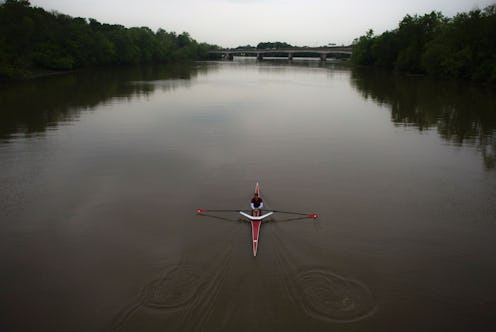News
What You Need To Know About North Dakota's Caucus
North Dakota's Democratic caucus is one of the final primary contests this election cycle. So, is the North Dakota Democratic caucus winner-take-all? Like pretty much all of the other caucus races this year, there is a minimum threshold in place. But when checking out the official rules of the caucus, things start to get really interesting.
The North Dakota Democratic-NPL caucuses will start just like many others in the heartland and Western states did. Volunteers and local leadership will be ready at 5 p.m. CT on June 7, so that everything will be in order by the time that the doors are set to close at 7 p.m. After reciting the Pledge of Allegiance (or conducting a some kind of patriotic opening ceremony as set forth in the rules) the caucus process will begin.
Here's where things get interesting.
In North Dakota, the purpose of the legislative district caucus is to select elected representatives to attend the State Delegate Selection Meeting. Technically speaking, this means neither Clinton nor Sanders will be able to declare victory in North Dakota on the network news on June 7. In fact, it'll be difficult for the campaigns to have a handle on exactly what they can expect their delegation to look like until after the SDSM meeting happens.
There's also another catch: according to the rules, it is also possible for any caucus goer to call for a preference caucus to represent a certain specific issues — like a constitutional amendment to overturn the Citizens United SCOTUS ruling, or to call for a state ban on fracking or new pipeline construction. As long as the preference caucus is able to garner at least 15 percent of the votes from caucus goers in attendance, then that preference caucus will be able to be in the running to get representation at the SDSM.
While the likelihood of either of these specific preference caucuses actually getting over the 15 percent threshold is somewhat hard to imagine, depending on turnout and organization, it may be possible for other preference caucuses to organize themselves. It would even theoretically be possible for an "uncommitted" delegation to form alongside a "unity" delegation, in addition to the Sanders and Clinton delegations.
The State Delegate Selection Meeting will occur on June 18, where the delegation will be selected, based on the preferences of the elected delegate at the first caucus, and based on the personal impressions that the potential delegates themselves make on their fellow caucus-goers. Only then will it be possible to begin to really get a handle on which candidate is likely to walk away with the upper hand in North Dakota.
